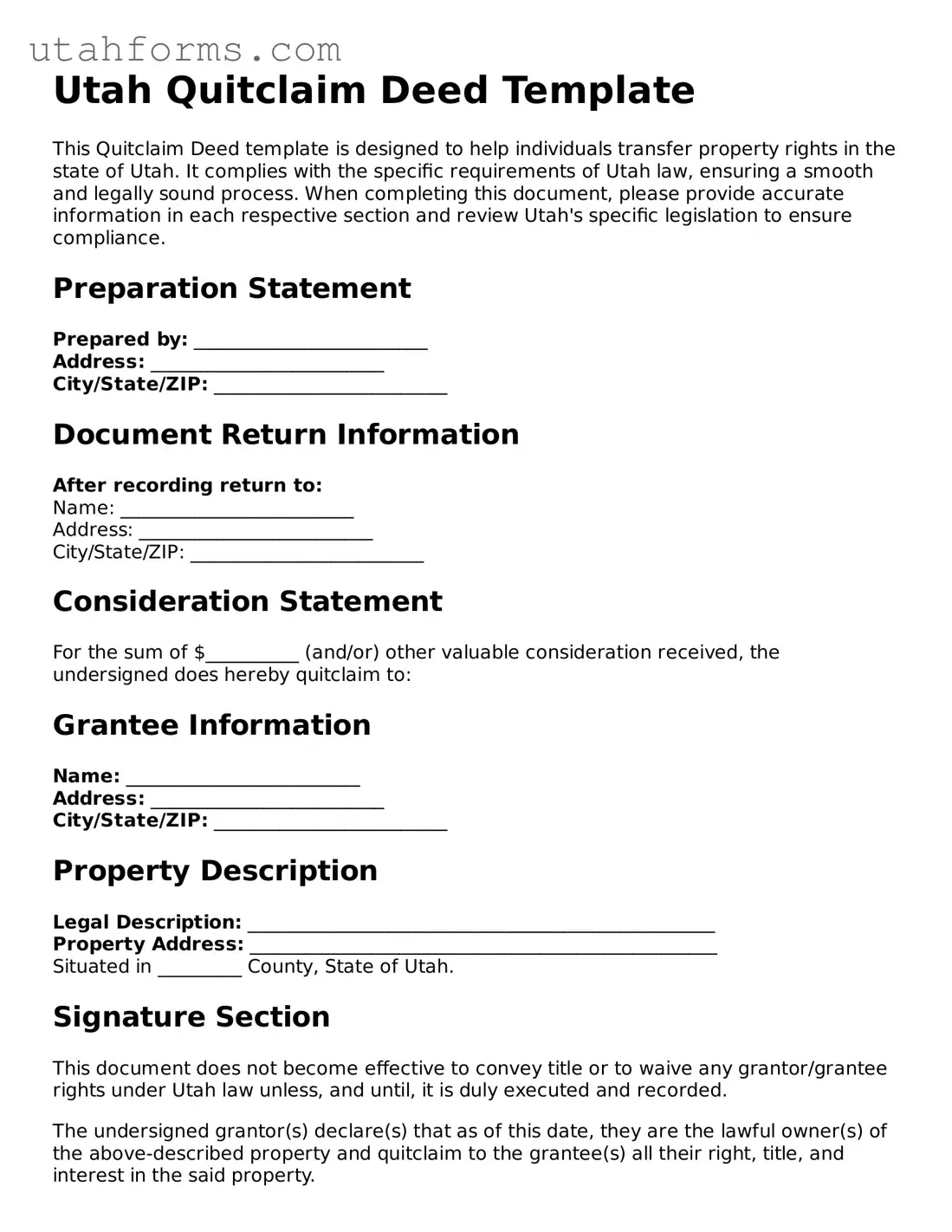Utah Quitclaim Deed Template
This Quitclaim Deed template is designed to help individuals transfer property rights in the state of Utah. It complies with the specific requirements of Utah law, ensuring a smooth and legally sound process. When completing this document, please provide accurate information in each respective section and review Utah's specific legislation to ensure compliance.
Preparation Statement
Prepared by: _________________________
Address: _________________________
City/State/ZIP: _________________________
Document Return Information
After recording return to:
Name: _________________________
Address: _________________________
City/State/ZIP: _________________________
Consideration Statement
For the sum of $__________ (and/or) other valuable consideration received, the undersigned does hereby quitclaim to:
Grantee Information
Name: _________________________
Address: _________________________
City/State/ZIP: _________________________
Property Description
Legal Description: __________________________________________________
Property Address: __________________________________________________
Situated in _________ County, State of Utah.
Signature Section
This document does not become effective to convey title or to waive any grantor/grantee rights under Utah law unless, and until, it is duly executed and recorded.
The undersigned grantor(s) declare(s) that as of this date, they are the lawful owner(s) of the above-described property and quitclaim to the grantee(s) all their right, title, and interest in the said property.
Grantor's Signature: _________________________ Date: _______________
Grantor's Printed Name: _________________________
Grantor's Signature: _________________________ Date: _______________
Grantor's Printed Name: _________________________
State of Utah
County of _______________
This instrument was acknowledged before me on (date) _______________ by (name(s) of person(s)) _________________________.
Notary Public: _________________________
My Commission Expires: _______________
Acknowledgment
This template is provided as a courtesy and does not constitute legal advice. Each individual situation may require consultation with a legal professional to ensure that all Utah legal requirements are met.
